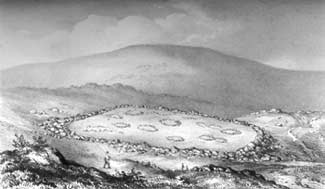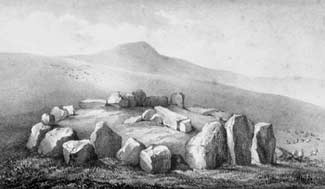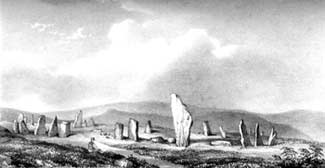






Half a century
before the publication of The Hound of the Baskervilles,
a 19th-century vicar of Devon named Samuel Rowe wrote
a guidebook called A Perambulation of the Ancient and Royal
Forest of Dartmoor (1848). The book's illustrations show views
of the various types of rock circles that Dr. Watson—and Conan Doyle,
when he traveled to Dartmoor before writing Hound—might have observed. The ruins of Bronze Age and Iron Age (700 B.C. to 100 A.D.) villages, some built on fortified platforms of earth surrounded by stone walls, can still be seen on Dartmoor today. Some villages consist solely of low stone circles, while others have higher walls. No roofs remain; these would have been constructed of timber or thatch. Some stone circles had a cairn in the middle, probably marking a burial place.
Some stone circles or lines of upright stones were probably used for religious rites or astronomical observations. Bronze Age sites like this, such as Stonehenge, exist all over England and Western Europe, but their meaning has been lost. | ||||||||||
Copyright ©
2006 Stanford University. All rights reserved. Stanford, CA 94305, (650)723-2300
l Terms
of Use


